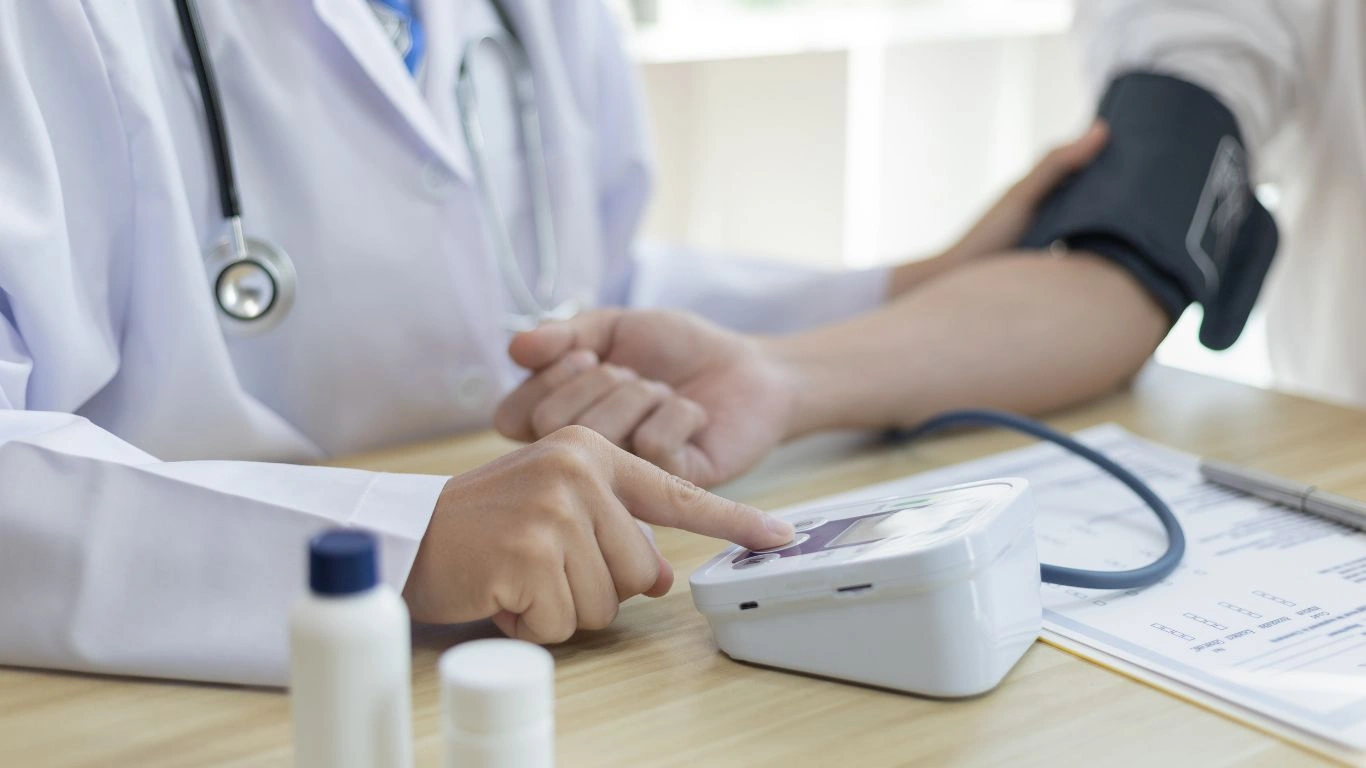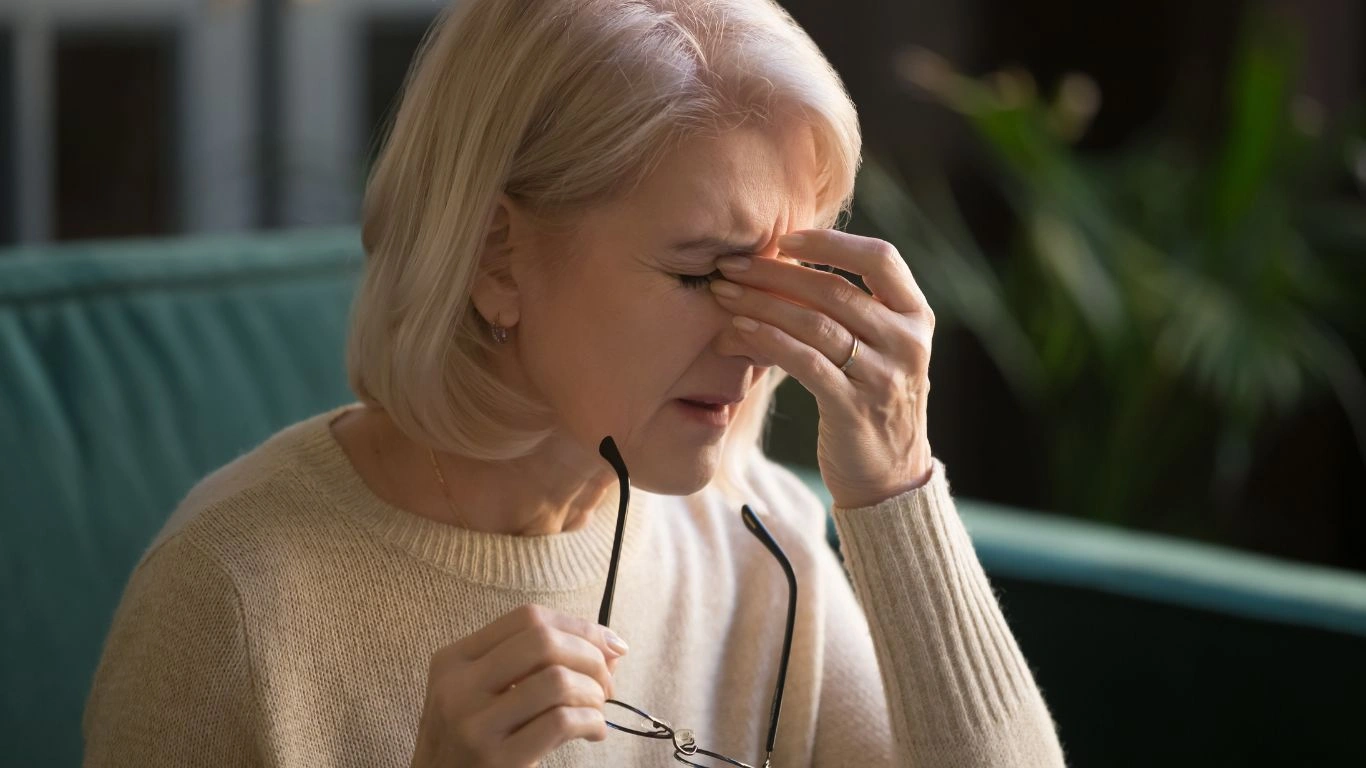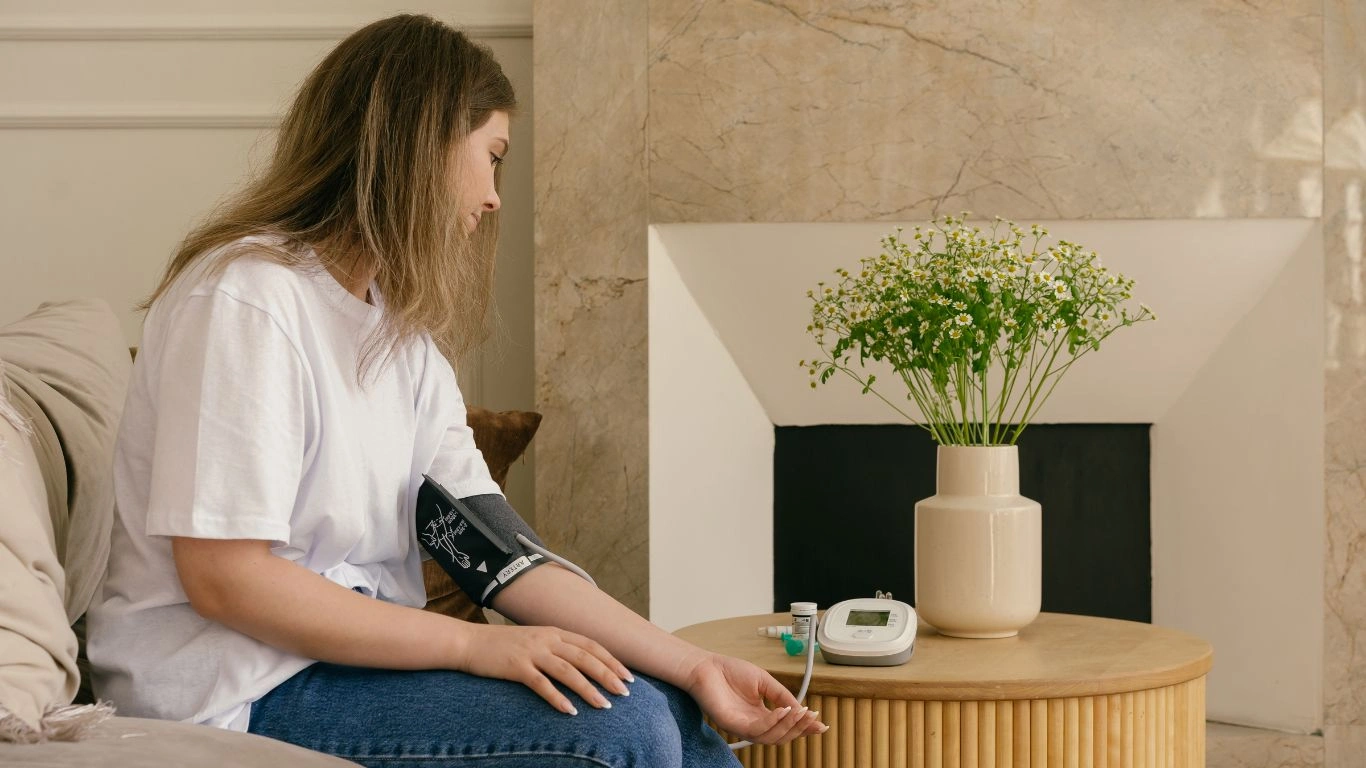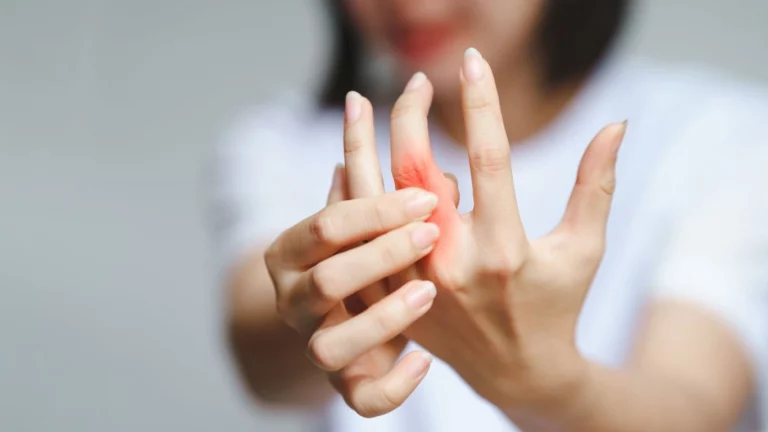Discover the Shocking Truth About Hypertension and Eye Floaters
Ever had one of those days where you’re sitting in clinic, and a patient walks in complaining of weird little specks or cobwebs drifting across their vision? And just as you’re jotting that down, they casually mention they’ve also been dealing with high blood pressure for a while. That made me pause—and honestly, it’s what led me down the rabbit hole of exploring the relationship between hypertension and eye floaters: any link? Spoiler alert: it’s not as straightforward as we might think. But it is fascinating—and worth unpacking, especially if you manage hypertensive patients as often as I do.
Can High Blood Pressure Mess with Your Eyes?

Let’s start with the basics. As an internist, hypertension is one of my daily bread-and-butter conditions. We know it can wreak havoc on the kidneys, brain, and heart—but the eyes? Yep, they’re not safe either. Chronic high blood pressure can cause damage to the tiny, delicate vessels in the retina, leading to what we call hypertensive retinopathy. But what about floaters? That’s where things get a little murky.
What Are Eye Floaters Anyway?
Eye floaters are those drifting shapes—dots, lines, spiderwebs—that most of us have seen at some point, especially when staring at a bright background. They’re usually caused by tiny clumps of gel or cells inside the vitreous, the clear jelly-like substance that fills your eyeball.
They’re typically harmless and age-related. But in some cases, especially when they appear suddenly and in large numbers, they can be a sign of something more serious, like a retinal tear or detachment. I’ve had a few patients who ignored floaters until it was almost too late—cue the emergency ophthalmology referral.
So, Is There a Link Between Hypertension and Eye Floaters?

Alright, let’s dig into the million-dollar question: Hypertension and eye floaters: any link? Short answer? Possibly, but not directly. There’s no clear, direct causative connection in the literature (yet). However, there are some indirect pathways that make sense when you think about them from a pathophysiology standpoint.
- Vascular fragility: Chronic high blood pressure can make retinal vessels more fragile, increasing the risk of bleeding into the vitreous. A vitreous hemorrhage can present with—you guessed it—sudden onset floaters.
- Hypertensive retinopathy: As the retinal vessels narrow or leak, this could potentially lead to inflammation or other changes in the eye environment that might contribute to floaters, although this is less well-established.
- Associated conditions: Patients with hypertension often have comorbidities like diabetes or hyperlipidemia, both of which carry their own ocular risks. The cumulative effect could very well lead to floaters in a roundabout way.
From my own clinical experience, I’ve seen patients with uncontrolled hypertension who also presented with sudden floaters. Some were due to a small hemorrhage that cleared on its own. Others ended up being early signs of retinal detachment. It’s definitely not something to dismiss.
Patient Story Time (The Ones You Don’t Forget)
One patient I’ll never forget was a 59-year-old gentleman with poorly controlled hypertension—consistently hovering around 180s systolic. He came in for a routine refill but casually mentioned he’d started seeing “tiny bugs flying around” in his vision. No pain, no redness. Just floaters. Turns out, he had a small vitreous hemorrhage, likely from a microaneurysm rupture in his retina. We caught it early, and he did great with some ophthalmology follow-up and tighter BP control. But it stuck with me. That could’ve been missed so easily.
Why This Matters for Us as Clinicians

We talk so much about stroke prevention, renal protection, and heart health when managing hypertension. But the eyes? They often get sidelined. Yet, vision changes—especially new floaters—can be early red flags for vascular issues in the eye. If you’re not asking your patients about vision symptoms during routine hypertension visits, it might be time to start. It doesn’t take long, and it could catch something big early.
The Role of Systemic Health in Ocular Changes

One thing that’s become really clear to me over the years is just how interconnected our body systems are. You can’t treat the heart without considering the kidneys, and you definitely can’t ignore the eyes when managing hypertension. Hypertension and eye floaters: any link? The deeper you look, the more you realize it’s not just about a cause-and-effect relationship. It’s about a whole-body cascade.
Let’s face it, many patients with uncontrolled blood pressure are dealing with a whole host of other issues. Poor circulation, oxidative stress, endothelial dysfunction—these things don’t stay neatly in their lanes. The retina, with its tiny blood vessels and sensitivity to perfusion, often shows some of the earliest signs of vascular strain. And while floaters might not always be the result of high blood pressure, ignoring them in someone with elevated readings? Risky move.
What’s Actually Happening Inside the Eye?
Here’s where things get geeky—but it’s the kind of geeky that helps us connect the dots. When blood pressure is too high for too long, those small vessels in the retina start to respond. You might see narrowing of the arteries, arteriovenous nicking, even flame-shaped hemorrhages. In some cases, small ruptures can leak into the vitreous.
Now, if that leakage is minor, it might not affect vision much. But if it leaks enough to disturb the clear gel inside the eye, floaters can show up. Not always, but enough that I now pay closer attention when a hypertensive patient mentions them—even if their retinas look okay at first glance.
When Should You Worry About Floaters?

This is the kind of stuff that doesn’t get talked about enough in routine hypertension management, but it really should. Here’s a quick list I keep in mind, especially for my patients over 50 or those with long-standing elevated BP:
- Sudden onset: If a patient suddenly notices floaters that weren’t there before, particularly if they’re numerous or come with flashes of light, that’s a red flag. It could point to retinal tear or detachment, and time is vision.
- Unilateral floaters: When floaters show up in one eye only—especially the eye that’s had previous retinal issues—it’s worth a closer look.
- Floaters + vision loss: If they’re noticing a “curtain” or blurring alongside the floaters? Don’t wait. That’s a same-day referral to ophthalmology.
- Persistent or worsening floaters: Chronic floaters that don’t resolve or are increasing could mean a slow vitreous hemorrhage or something more serious brewing.
It’s not just about spotting danger, though. Patients appreciate when we take these complaints seriously. That extra 30 seconds you spend asking about their vision? It builds trust—and it could prevent irreversible vision loss.
Tips for Patients (Yes, I Actually Tell Them This Stuff)

I always say, “If you’re seeing squiggles, floaters, or flashes that don’t go away, don’t Google it—call me.” Because let’s be honest, Dr. Google will either downplay it or send them into a spiral. Instead, I give them practical, simple advice:
- Keep your blood pressure well-controlled. That means home monitoring, not just office visits.
- Don’t skip your annual eye exams, even if your vision seems fine. Floaters might not be visible during basic screenings.
- If you notice new floaters, flashes of light, or a shadow in your vision, don’t wait. Call your primary care doc or get to an ophthalmologist.
- Remember that your eyes are a window to your vascular health. They can show signs of trouble long before symptoms hit elsewhere.
Over the years, I’ve had a few patients who’ve thanked me for catching something early just because I asked one extra question. That’s the kind of medicine I believe in—connecting the dots, thinking beyond the chief complaint, and treating the whole person, not just their numbers.
The Bottom Line (for Us, Not the Article!)
There may not be a textbook definition linking hypertension and eye floaters, but clinically? The pattern shows up often enough that I never ignore it. Whether it’s a small hemorrhage from fragile vessels or a warning sign of something more serious, it’s worth our attention. And honestly, it’s a reminder of how much our eyes can tell us—if we’re listening.
Managing Hypertension to Protect Your Vision

Now, here’s the real deal from someone who’s been knee-deep in hypertension management for years: controlling blood pressure isn’t just about preventing heart attacks or strokes—it’s also a crucial step to safeguarding your eyes. The delicate network of blood vessels in the retina is vulnerable to damage from consistently high pressures, and that can manifest in ways as subtle as a few floaters or as severe as vision loss.
From my own practice, I’ve seen how patients who maintain a steady, well-controlled blood pressure tend to have fewer ocular complications. And it’s not rocket science—keeping your systolic pressure in the target range lowers the stress on those tiny vessels, reducing the risk of hemorrhages that could cause floaters or worse. The key is consistent control, not just a once-in-a-while good reading.
Practical Steps for Patients
Here’s what I always tell my patients, in no-nonsense terms:
- Monitor at home: Blood pressure can fluctuate, so home readings help paint the real picture. Plus, it empowers you to take control.
- Stick to your meds: I get it—pills can be annoying, but skipping them can lead to trouble in places you’d never expect, like your eyes.
- Eat smart: A diet rich in fruits, veggies, and low in sodium goes a long way in managing hypertension—and your eye health will thank you.
- Exercise regularly: Even a daily walk can make a difference in vascular health.
- Keep regular appointments: Don’t skip your primary care or eye specialist visits, especially if you’ve been noticing vision changes.
When patients take these steps seriously, the results are undeniable. Not only do they feel better overall, but we also catch issues before they escalate into emergencies. I can’t stress enough how empowering it is to educate and involve patients in their care—vision is something everyone values deeply, and it’s motivating when they realize their actions make a difference.
When to Refer and What to Expect

In internal medicine, knowing when to send a patient to an ophthalmologist is crucial. If a patient with hypertension reports new or worsening floaters, flashes of light, or any visual field loss, I don’t hesitate to make that referral. Early ophthalmic evaluation can detect serious problems like retinal tears, detachment, or vitreous hemorrhages that require urgent intervention.
Typically, the eye specialist will perform a dilated fundoscopic exam, and possibly an ultrasound if the view is obscured by hemorrhage. Advanced imaging like OCT (optical coherence tomography) might also be used to assess retinal layers and vitreous status. This multi-modal approach ensures nothing slips through the cracks.
From personal experience, timely referrals have saved patients from permanent vision loss more times than I can count. One patient’s “floaters” turned out to be a retinal detachment caught just in time for surgery—an outcome that could easily have been devastating if missed.
Why We Need More Awareness
Hypertension is a beast, affecting nearly half of adults worldwide, yet the eye implications aren’t discussed nearly enough outside of ophthalmology circles. I think we, as frontline clinicians, have a duty to change that narrative. Educating patients about how their blood pressure affects not only their heart and kidneys but also their vision adds a whole new level of urgency to treatment adherence.
Plus, with so many patients reporting vague symptoms like floaters, we need to be proactive in asking questions and knowing the red flags. The sooner we catch these signs, the better the outcomes—and that’s a message worth repeating.
Wrapping Up the Vision-Blood Pressure Connection
So, circling back to the question that started this whole conversation: Hypertension and eye floaters: any link? While the direct connection isn’t crystal clear, the evidence and clinical experience suggest that hypertension plays a significant indirect role. Whether it’s through vascular fragility, micro-bleeds, or associated retinal changes, high blood pressure is definitely a player in the eye floaters story.
More importantly, this relationship reminds us to think holistically and keep asking the right questions during patient visits. The eyes may not be the first organ we think about when managing hypertension, but they certainly deserve our attention.
References
- https://www.aao.org/ (American Academy of Ophthalmology)
- https://www.heart.org/ (American Heart Association)
- https://www.kidney.org/ (National Kidney Foundation)
- https://www.cdc.gov/ (Centers for Disease Control and Prevention)
Disclaimer
This article is intended for informational purposes only and does not replace professional medical advice, diagnosis, or treatment. Always consult your healthcare provider for personalized guidance regarding your health and vision concerns.

Dr. Gwenna Aazee is a board-certified Internal Medicine Physician with a special focus on hypertension management, chronic disease prevention, and patient education. With years of experience in both clinical practice and medical writing, she’s passionate about turning evidence-based medicine into accessible, actionable advice. Through her work at Healthusias.com, Dr. Aazee empowers readers to take charge of their health with confidence and clarity. Off the clock, she enjoys deep dives into nutrition research, long walks with her rescue pup, and simplifying medical jargon one article at a time.






